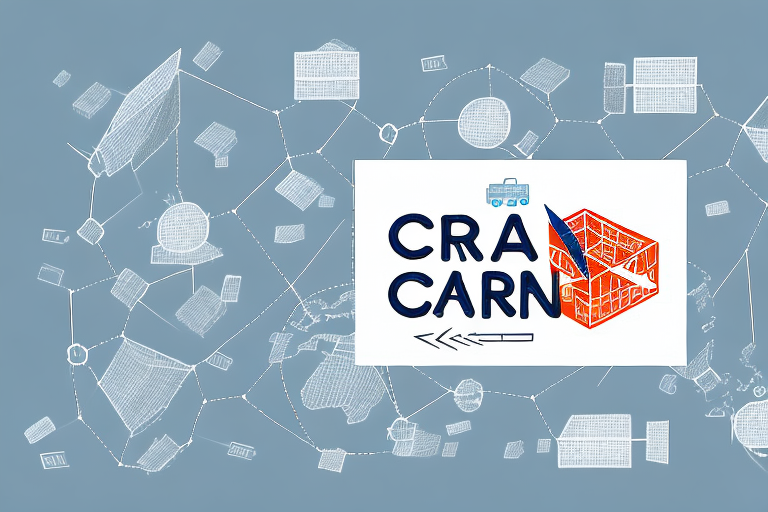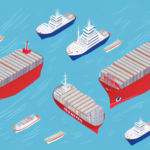Understanding Cargo Ready Date (CRD) in Supply Chain Management
The Cargo Ready Date (CRD) is a pivotal element in supply chain management, determining when a shipment is prepared for pickup or delivery. Accurate CRD scheduling is essential for coordinating logistics, meeting customer expectations, and optimizing operational costs. This article delves into the significance of CRD, best practices for its management, and the role of technology in enhancing supply chain efficiency.
Importance of CRD in the Supply Chain
Setting Clear Expectations and Timelines
CRD establishes clear timelines for all stakeholders involved in the supply chain, ensuring that shipments are prepared and dispatched on schedule. This alignment facilitates efficient resource allocation, route optimization, and minimizes operational disruptions.
Preventing Delays and Reducing Costs
By adhering to a well-defined CRD, companies can avoid unnecessary storage fees, demurrage charges, and other costs associated with delays. According to a study by the International Journal of Supply Chain Management, effective CRD management can reduce logistics costs by up to 15%.
Risk Management and Contingency Planning
CRD serves as a tool for anticipating potential supply chain disruptions. By forecasting readiness dates, companies can implement contingency plans, such as alternative transportation routes or increased inventory levels, to mitigate risks.
Meeting Customer Demands Through Effective CRD Management
Enhancing Delivery Reliability
Customers today expect timely and reliable delivery services. A precise CRD ensures that shipments arrive as scheduled, enhancing customer satisfaction and loyalty. Reliable delivery can be a key differentiator in competitive markets.
Building Trust Through Transparency
Regular updates on shipment status based on accurate CRD information foster transparency between customers and service providers. This transparency builds trust and can lead to long-term business relationships.
Optimizing Operations Based on Customer Data
Analyzing CRD data allows service providers to identify trends in delivery times and customer demands. This analysis enables continuous improvement in operations, leading to increased efficiency and cost savings.
Streamlining Supply Chain Processes with CRD
Improved Coordination Among Stakeholders
Sharing CRD information with all parties involved—from carriers to customs brokers—ensures that everyone operates with the same timelines, reducing miscommunication and enhancing overall efficiency.
Accurate Forecasting and Planning
CRD facilitates precise forecasting of shipment volumes, enabling better inventory management and resource allocation. Accurate planning minimizes waste and optimizes the use of assets across the supply chain.
Identifying and Eliminating Bottlenecks
By monitoring CRD data, companies can detect patterns that indicate potential bottlenecks. Addressing these issues proactively improves the flow of goods and enhances supply chain performance.
Impact of CRD on Inventory Management and Cost Optimization
Optimizing Inventory Levels
Understanding the CRD allows companies to maintain optimal inventory levels, reducing the risks of stockouts or overstocking. This balance is crucial for minimizing holding costs and ensuring product availability.
Negotiating Better Rates and Streamlining Routes
With a clear CRD, supply chain teams can negotiate more favorable rates with carriers and plan more efficient transportation routes, leading to significant cost savings.
Enhancing Cross-Team Communication
Real-time CRD updates facilitate better communication between different teams, ensuring that inventory is managed effectively and that any issues are promptly addressed.
Best Practices for Managing CRD in Supply Chain Planning
- Clear Communication: Ensure all stakeholders are informed about the CRD and understand its importance.
- Regular Updates: Keep customers and partners informed about the shipment status and any changes to the CRD.
- Monitor External Factors: Stay aware of factors like weather, port congestion, and regulatory changes that could impact the CRD.
- Leverage Technology: Utilize Transportation Management Systems (TMS) and Supply Chain Management (SCM) software to automate and enhance CRD tracking.
- Develop Contingency Plans: Have backup plans in place to address unexpected delays or disruptions.
Overcoming Common Challenges in CRD Management
Dealing with Port Congestion and Delays
Port congestion can significantly affect CRD. Implementing alternative routes and planning shipments during off-peak times can help mitigate these delays.
Ensuring Regulatory Compliance
Staying updated with international trade regulations and ensuring all necessary documentation is in place can prevent compliance-related delays and penalties.
Managing Capacity Constraints
Collaborating with multiple carriers and planning shipments well in advance can help secure the necessary capacity, especially during peak seasons.
Role of Technology in Enhancing CRD Management
Advanced technologies like Transportation Management Systems (TMS) and Supply Chain Management (SCM) software provide real-time visibility into shipment statuses, automate workflows, and facilitate seamless communication among stakeholders. According to a report by Gartner, the supply chain management software market is expected to grow by 12% in 2023, highlighting the increasing reliance on technology to manage CRD effectively.
Case Studies: Successful CRD Implementation
DHL Supply Chain
DHL implemented a sophisticated TMS to centralize CRD management, enabling real-time monitoring of shipment statuses and proactive handling of potential disruptions. This system has enhanced their ability to manage inventory levels accurately and respond swiftly to supply chain challenges.
Walmart
Walmart adopted an automated system for processing vendor orders, which improved the accuracy of CRD identification and streamlined the preparation and delivery of orders. This automation has resulted in reduced lead times and optimized supply chain operations.
Conclusion
The Cargo Ready Date (CRD) is integral to effective supply chain management, influencing customer satisfaction, operational efficiency, and cost optimization. By implementing best practices, leveraging advanced technologies, and addressing common challenges, companies can enhance their CRD management strategies. This, in turn, ensures a resilient and efficient supply chain capable of meeting the dynamic demands of the global market.






















